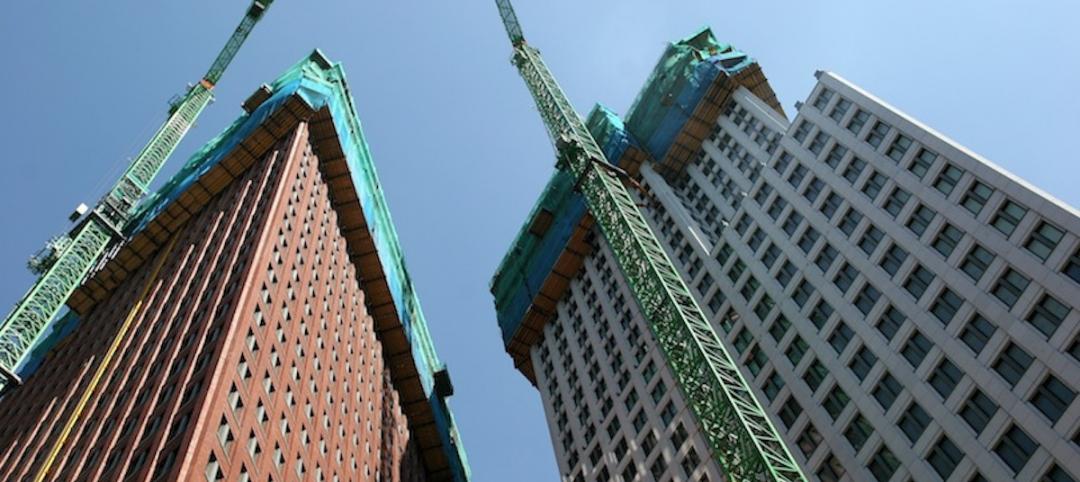The 2016 version of ANSI/ASHRAE/IES Standard 90.1, the Energy Standard for Buildings Except Low-Rise Residential Buildings, was recently released.
The update includes a new compliance path and significant technical changes affecting building envelope, and mechanical and lighting systems. The document contains 121 new addenda since publication of the previous version: the 2013 standard.
The 2016 edition contains a new compliance path, the Performance Rating Method, which is included in Appendix G. The provision was previously used only to rate “beyond code” performance of buildings; it now serves as an alternative to the traditional performance path.
Among the most significant technical changes are:
Envelope:
• Mandatory requirements for envelope verification, supporting reduced air infiltration, and increased requirements for air leakage to overhead coiling doors.
• More stringent prescriptive requirements for metal building roofs and walls, fenestration, and opaque doors.
• Improved clarity of exterior walls definitions, building orientation, and clarity around the effective R-value of air spaces.
• New requirements based on the addition of climate zone 0.
Lighting:
• Modified control requirements to simplify advanced lighting control applications.
• New exterior and interior lighting power densities based on LED technology.
• Requirements for dwelling units to set limits on light source efficacy.
• Additional controls for lighting in parking areas.
Mechanical:
• Chilled water plant metering, requiring large electric driven chilled water plants to be monitored for electric energy use and efficiency.
• DOAS requirements, adding efficiency and rating requirements for dedicated outside air systems.
• Elevator efficiency, introducing requirements for identifying usage category and efficiency class.
• Economizer fault detection and diagnostics, implementing monitoring system requirements for air-cooled DX cooling units with economizers, helping to ensure that equipment is working properly.
• New requirements for replacement equipment, such as adding economizers or fan speed control, which previously only applied to new installations.
More information on code adoption and related technical assistance is available at energycodes.gov.
Related Stories
University Buildings | Feb 23, 2015
Future-proofing educational institutions: 5 trends to consider
In response to rapidly changing conditions in K-12 and higher education, institutions and school districts should consider these five trends to ensure a productive, educated future.
Office Buildings | Feb 23, 2015
The importance of quiet and the consequences of distraction
Recent work style studies show that the average knowledge worker spends 25-35% of their time doing heads-down focused work. Once thrown off track, it can take some 23 minutes for a worker to return to the original task.
BIM and Information Technology | Feb 23, 2015
9 best practices for effective laser scanning
JE Dunn’s National BIM Director, Trent Nichols, offers tips and advice for mastering the art of laser scanning.
Modular Building | Feb 23, 2015
Edge construction: The future of modular
Can innovative project delivery methods, namely modular construction, bring down costs and offer a solution for housing in urban markets? FXFOWLE’s David Wallance discusses the possibilities for modular.
Contractors | Feb 23, 2015
Rising Nonresidential Construction Index comes with struggles, FMI reports
Construction companies face the challenge of having enough people to keep up with increasing backlogs.
Green | Feb 23, 2015
State of the green union, and the next big shift in sustainability
The history of the green movement offers cues that we are on the precipice of another significant shift in the green union.
| Feb 23, 2015
Where are the iconic green buildings?
What does a green building look like? How would you know one if you saw one? Maybe a trivial question to some, but of great interest to architects, designers, and other members of the Building Team as the rapid evolution of sustainable buildings continues apace.
University Buildings | Feb 20, 2015
Penn strengthens campus security by reviving its surrounding neighborhood
In 1996, the University of Pennsylvania’s sprawling campus in Philadelphia was in the grip of an unprecedented crime wave. But instead of walling themselves off from their surrounding neighborhoods, the school decided to support the community.
Engineers | Feb 20, 2015
PwC reports record year for M&A activity in engineering and construction
Worldwide engineering and construction industries closed 218 M&A deals in 2014 worth more than $172 billion, according to a PwC report.
Multifamily Housing | Feb 19, 2015
Is multifamily construction getting too frothy for demand?
Contractors are pushing full speed ahead, but CoStar Group thinks a slowdown might be in order this year.
















